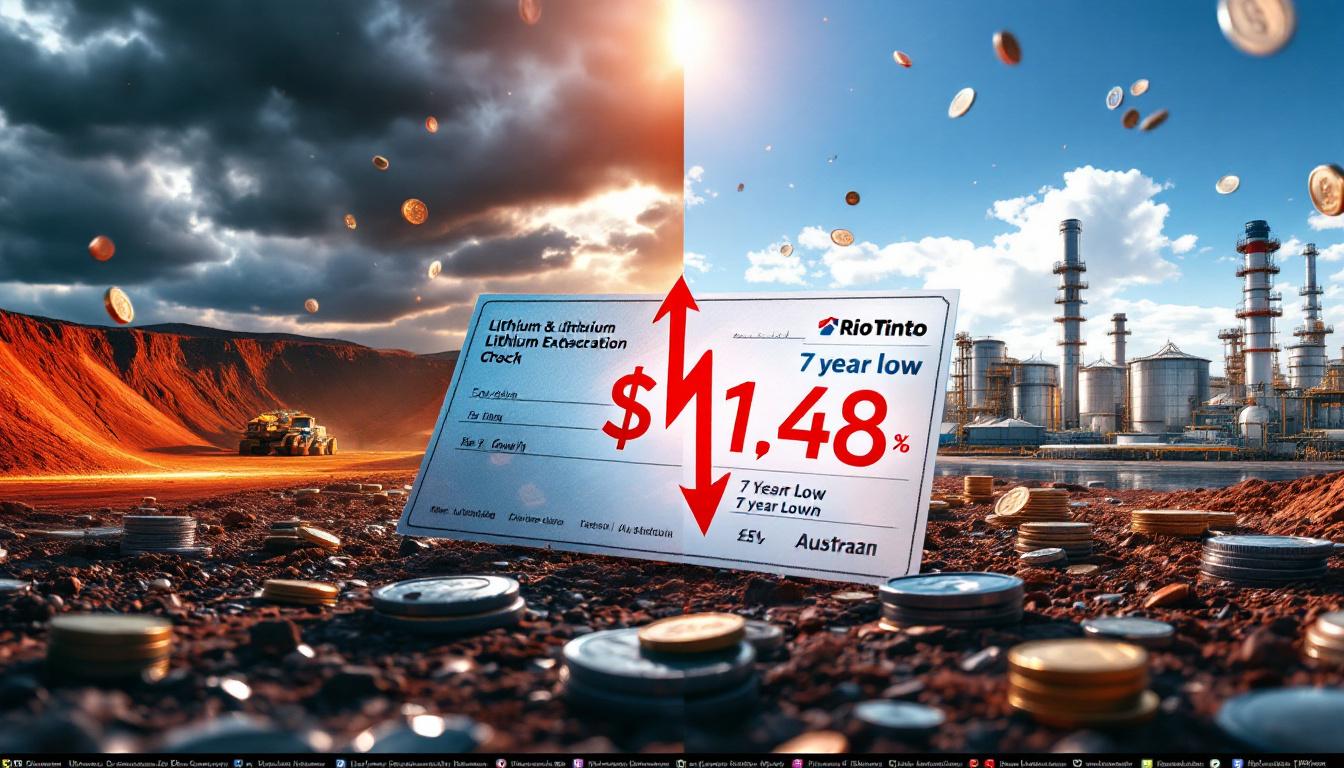What Happened Between Iran and the U.S. in the Recent Military Exchange?
On June 23, 2025, Iran launched a missile strike targeting the U.S. Al-Udeid Air Base in Qatar, a strategic installation widely recognized as the largest American military base in the Middle East. This action came as a direct response to American airstrikes on Iranian nuclear facilities conducted over the previous weekend.
Multiple explosions were reported near Doha, with additional strikes occurring against American assets in Iraq. According to reports from NPR, the missiles were intercepted by defense systems, preventing major damage or casualties.
Despite what might normally be considered a significant escalation in Middle East tensions, financial markets responded in a surprising manner—oil prices fell by approximately 6% in late Monday trading, confounding many casual observers.
This counterintuitive market reaction signals a complex reading of the situation by oil traders and energy market analysts who interpreted the exchange through a nuanced lens of historical precedent and strategic signaling.
Why Did Oil Prices Fall After a Military Strike?
Market Psychology and Risk Assessment
The 6% drop in crude prices represents what energy market analysts call an "unwinding of the risk premium"—a phenomenon where markets price in worst-case scenarios before an anticipated event, then correct downward when the reality proves less severe than feared.
"The market's response makes more sense when viewed through the lens of risk pricing and investor psychology," notes Robert Rapier in his oil price rally analysis. "In the lead-up to Iran's response, oil prices had risen on fears of a significant escalation. But once the strike materialized and appeared measured, the market began to unwind that risk premium."
Despite the attack targeting the largest U.S. military base in the Middle East, oil traders interpreted Iran's actions as deliberately measured rather than escalatory. Several factors contributed to this market perception:
- Iranian officials coordinated the strike in advance with Qatari authorities
- Advance notification was provided regarding timing and targets
- The attack appeared designed as a symbolic response rather than one intended to cause significant casualties
- The pattern mirrored Iran's 2020 approach following General Qassem Soleimani's death
According to New York Times reporter Farnaz Fassihi, "Sources familiar with the plan described it as a symbolic response designed to avoid significant escalation." This calculated approach suggested to market participants that Iran was signaling strength while deliberately avoiding actions that would trigger a spiraling conflict—particularly important given the critical Strait of Hormuz shipping lane.
The Unwinding of the Risk Premium
The market response can be better understood by examining the phases of price action during geopolitical crises:
| Market Phase | Price Action | Market Psychology |
|---|---|---|
| Pre-strike | Rising prices | Fear of significant escalation |
| Post-strike | Falling prices | Relief at measured response |
This pattern follows historical precedents in geopolitical crises, where uncertainty drives prices higher until clarity emerges about the scope of military action. Once traders assess the actual response as less severe than feared, prices correct downward.
"Oil markets appear to have interpreted that restraint as a sign that significant escalation is unlikely in the short term." — Robert Rapier, Oilprice.com
What Makes Qatar's Role in This Conflict Unique?
Qatar occupies an exceptionally delicate position in this geopolitical standoff, balancing multiple strategic relationships that place it at the nexus of regional tensions.
"Qatar occupies a precarious middle ground. As host to U.S. forces, a diplomatic partner to Iran, and one of the world's largest LNG exporters, Qatar occupies a precarious middle ground," explains Robert Rapier in his Oilprice.com analysis.
Qatar's Multiple Strategic Roles
- Hosts Al-Udeid, the largest U.S. military base in the Middle East
- Maintains diplomatic relations with Iran
- Ranks among the world's largest LNG exporters
- Serves as a key mediator in regional conflicts
This multifaceted position places Qatar in a precarious balancing act. While the missile strike was reportedly intercepted, the very targeting of a facility in Qatar highlights the fragility of regional stability and the potential energy market implications should the conflict escalate.
The selection of Al-Udeid as a target—even with advance notification—demonstrates Iran's strategic messaging capabilities while also highlighting Qatar's vulnerability as it attempts to navigate complex regional relationships.
How Fragile Is the Current Situation?
Assumptions of Rational Actors
The market's relatively calm response reflects an underlying assumption that rational decision-makers remain in control on both sides. This assumption carries inherent risks.
"The price response also reflects a market that assumes rational actors remain in control. That assumption, however, carries its own risks," warns Robert Rapier. These risks include:
- A miscalculation by either party could rapidly change circumstances
- Future attacks resulting in significant casualties would likely trigger stronger responses
- Domestic political pressures in both countries could force more aggressive postures
- The Strait of Hormuz remains a potential flashpoint that could dramatically impact global oil supplies
Historical Precedents for Volatility
The Middle East has repeatedly demonstrated how quickly regional tensions can transform from controlled demonstrations of force into unpredictable conflicts. Market participants recognize this history while currently betting on restraint prevailing.
The region's complex web of alliances, historical grievances, and strategic interests means that what appears contained today could expand rapidly tomorrow. Energy markets are currently pricing in restraint, but remain poised to react swiftly should circumstances change.
What Are the Implications for Energy Markets?
Short-Term Market Outlook
The immediate market response suggests traders view the current exchange as contained, but several factors could quickly change this assessment:
- Any indication Iran might follow through on threats to close the Strait of Hormuz
- Casualties resulting from future strikes
- Expansion of targets to include energy infrastructure
- Involvement of additional regional powers
Market Insight: The 6% drop in oil prices reflects not just the current reality but market expectations about future developments. These expectations can shift rapidly with new information.
Monitoring Key Indicators
Energy market participants should closely watch:
- Official statements from both governments regarding "red lines"
- Movement of naval assets near strategic waterways
- Insurance rates for tankers operating in the region
- Changes in crude oil inventory levels as a hedge against disruption
The Strait of Hormuz in particular represents a critical vulnerability in global energy markets. Any actions threatening this chokepoint would likely result in immediate and significant price increases across energy commodities.
What Should Investors and Policymakers Consider?
Strategic Considerations
For those making energy-related decisions, several principles apply:
- Expect volatility: While prices fell following this exchange, the underlying tensions remain unresolved
- Watch for escalation triggers: Certain actions would likely cause rapid price increases
- Consider Qatar's vulnerability: As both an energy exporter and host to U.S. forces
- Monitor diplomatic channels: Back-channel communications often signal whether escalation is likely
The Psychological Element
Perhaps most importantly, energy markets are driven not just by current supply and demand but by expectations about future conditions. The 6% price drop reflects what investors believe will happen next—a belief that could change rapidly with new developments.
This psychological element explains why markets can appear to react counterintuitively to news events. In this case, the calculated nature of Iran's response provided clarity that reduced uncertainty, even while increasing apparent tensions.
Disclaimer: The energy market analysis presented here reflects current understanding of evolving geopolitical events. Investors should conduct their own due diligence and consider multiple scenarios when making investment decisions related to energy markets during periods of heightened geopolitical tension.
FAQ: Iran-U.S. Tensions and Energy Markets
Could Iran actually close the Strait of Hormuz?
While Iran has the military capability to disrupt shipping through the Strait temporarily, sustaining a blockade would be difficult against international opposition. However, even temporary disruptions could cause significant price spikes.
How does this compare to previous Iran-U.S. confrontations?
This exchange follows a pattern similar to the 2025 Iranian strikes on Al Udeid Air Base and the January 2020 missile strikes on U.S. bases in Iraq following General Soleimani's killing—a calculated response designed to save face domestically while avoiding major escalation.
What percentage of global oil supply passes through the Strait of Hormuz?
Approximately 20% of global oil supply and significant quantities of LNG pass through the Strait, making it one of the world's most critical energy chokepoints.
How might this affect global energy prices in the coming months?
If the current pattern of measured responses continues, the risk premium in oil prices may continue to diminish. However, markets will likely remain sensitive to any signs of escalation, potentially leading to rapid price fluctuations and US oil production decline factors could further complicate the situation.
Conclusion: Calculated Responses in a Volatile Region
The market's counterintuitive response to Iran's missile strike—a 6% drop in oil prices—reflects a sophisticated assessment of Iran's intentions. By executing a strike that was more symbolic than damaging, Iran appears to have signaled that it seeks to avoid major escalation while still responding to U.S. actions.
However, the situation remains inherently unstable. The Middle East's complex web of alliances, historical grievances, and strategic interests means that what appears contained today could expand rapidly tomorrow. Energy markets are currently pricing in restraint, but remain poised to react swiftly should circumstances change.
For now, the calculated nature of Iran's response has unwound the risk premium that had built up in oil prices—a reminder that in energy markets, perception of future risk often matters more than current realities.
Market participants should remain vigilant, as the Iran and U.S. missile strike on Al-Udeid Air Base represents not an end to tensions but merely the latest chapter in a long-running geopolitical contest with significant tariff global market impact and oil price trade war insights that could further complicate the scenario. Furthermore, US–China trade war effects might amplify the economic consequences of this military exchange in unpredictable ways.
Looking for Trading Opportunities in Energy Markets?
Gain a market-leading edge with real-time alerts on significant ASX commodity discoveries through Discovery Alert's proprietary Discovery IQ model, helping you capitalise on energy market volatility and geopolitical events before the broader market reacts. Explore how historic discoveries have generated substantial returns by visiting the Discovery Alert discoveries page and begin your 30-day free trial today.




